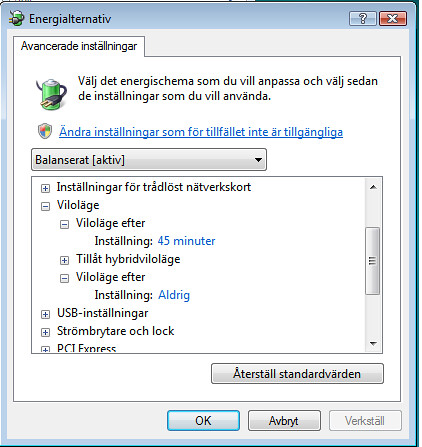When I recently reinstalled Windows XP on my main computer at home I decided to try to use an limited user account as much as possible. An interesting experience to say the least. After I had installed Windows I created two users, me and an account with administrator rights called Installation that I intended to only use when installing new applications and system maintenance. Using fast user switching to switch back and forth when necessary has made installing new things relatively painless. Not that I install new things that often, not after the initial rush to get the things I knew I wanted to use installed anyways.
Not all applications play nice when run with limited privileges though. A little bit disappointing but not very surprising, and since it is mostly minor issues I’ll probably continue with a limited user account as my main account.
Previously I used a bittorrent client called BitComet, but it wouldn’t work correctly now. Even if I made the .ini file in its application directory writable by all it wouldn’t download torrents. So I switched to µTorrent that I had read about a while ago and it worked just fine.
KeePass Password Safe, an opensource application I use for storing passwords. It also uses an .ini file in its application directory to store settings, which is by default readonly. Easily worked around, and it seems to work even if you don’t allow it to write to its .ini file, but you loose the ability to change any settings in the interface.
The software that came with my phone that among other things has a tool that lets my synchronize my contacts and calendar with Outlook, Sony Ericsson PC Suite, wont start at all. I tried to contact their support about it but after having filled out a support form I get nothing but 404:s when trying to submit. It would appear not only their phone hardware has issues.
FeedDemon 1.6 RC2, my favourite rss-reader, gave some error when started until it had been started once using an administrator account. Hopefully it will be fixed before the final version is released, installer issue probably.
Yet another chat client I use, Xfire, has a file download feature that does not work since it writes the downloaded files to its application directory, and I haven’t found a way to change that location. But chatting works, and that is what I use it for.
The price for the worst behaviour when run with a user account though goes to EA’s Battlefield 2. It seems it needs administrator privileges to run, there is a small note about administrator privileges on the box. But nowhere in the manual or elsewhere is it stated when it needs administrator privileges. Naively I thought I might as well try to run it, maybe it was only when installing the elevated privileges where needed. Unfortunately what happened was that the game happily started and when I tried to join a server I got a message popup that told me that my key no longer was valid. Not cool. Why not just detect that I didn’t have administrator privileges and tell me that it is needed, instead of detecting that I didn’t have administrator privileges and invalidate my key? I’m not impressed. Hopefully their support can do something about my key so I can play again. 🙁
Not all applications I use has had obvious problems though. Here is a short list of applications I regularely use that so far has worked just fine:
Update: Battlefield 2 has started working again, earlier it said invalid key even if I started it on an administrator account, but when I tried today I could play.

